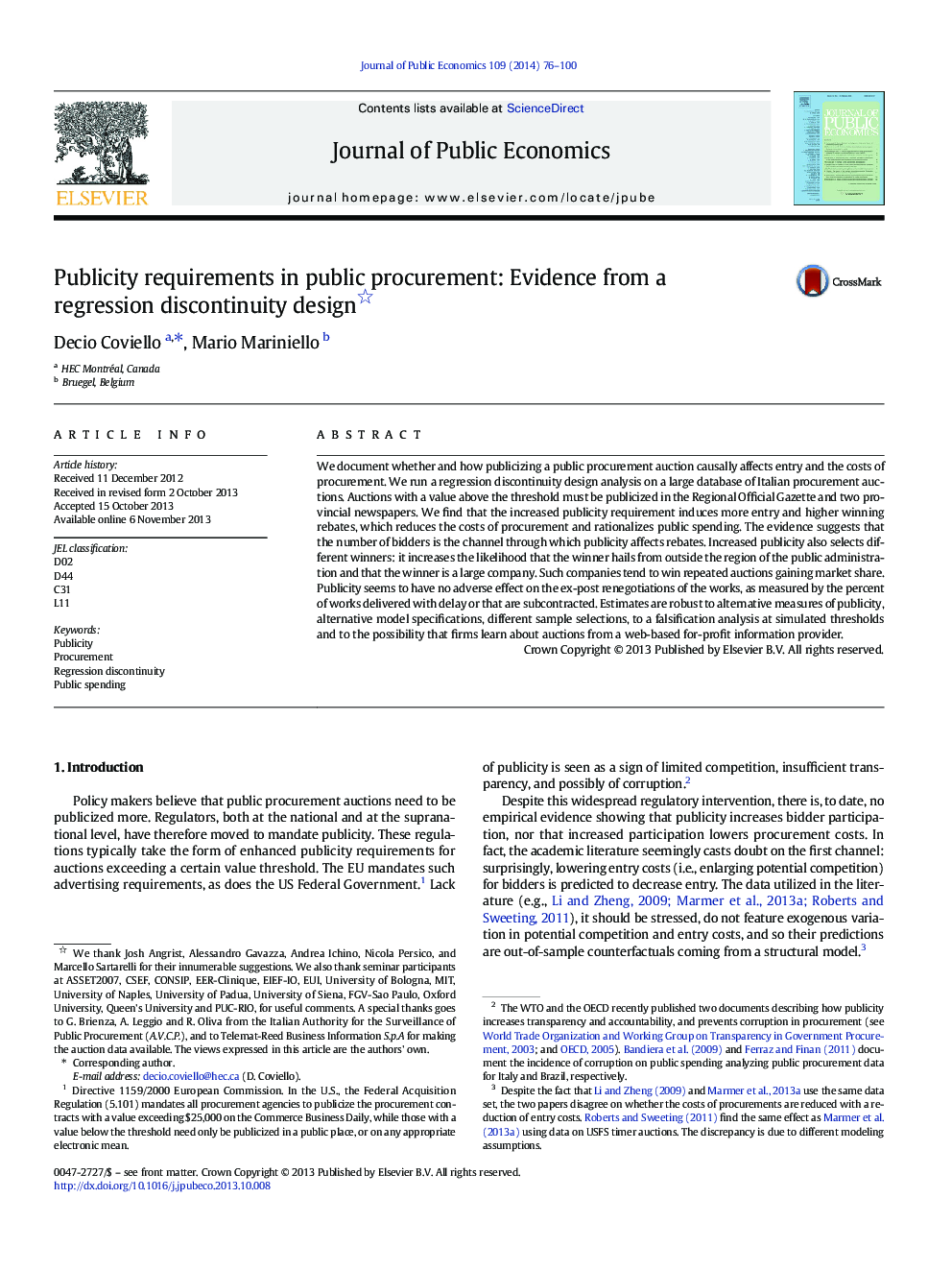| Article ID | Journal | Published Year | Pages | File Type |
|---|---|---|---|---|
| 968694 | Journal of Public Economics | 2014 | 25 Pages |
•First causal estimates of the effects of publicizing a public procurement auction on entry and the costs of procurement (i.e., reduction in public spending).•We run a regression discontinuity design analysis on a large database of Italian procurement auctions. Auctions with a value above the threshold must be publicized.•Increased publicity requirement induces more entry and higher winning rebates: reduces the costs of procurement and rationalizes public spending (reduction of 0.7% of GDP). The evidence suggests that the number of bidders is the channel through which publicity affects rebates.•Increased publicity also selects different winners and does not increase renegotiations.•Estimates are robust to alternative measures of publicity, alternative model specifications, different sample selections, to a falsification analysis at simulated thresholds, and to the possibility that firms learn about auctions from a web-based for-profit information provider.
We document whether and how publicizing a public procurement auction causally affects entry and the costs of procurement. We run a regression discontinuity design analysis on a large database of Italian procurement auctions. Auctions with a value above the threshold must be publicized in the Regional Official Gazette and two provincial newspapers. We find that the increased publicity requirement induces more entry and higher winning rebates, which reduces the costs of procurement and rationalizes public spending. The evidence suggests that the number of bidders is the channel through which publicity affects rebates. Increased publicity also selects different winners: it increases the likelihood that the winner hails from outside the region of the public administration and that the winner is a large company. Such companies tend to win repeated auctions gaining market share. Publicity seems to have no adverse effect on the ex-post renegotiations of the works, as measured by the percent of works delivered with delay or that are subcontracted. Estimates are robust to alternative measures of publicity, alternative model specifications, different sample selections, to a falsification analysis at simulated thresholds and to the possibility that firms learn about auctions from a web-based for-profit information provider.
